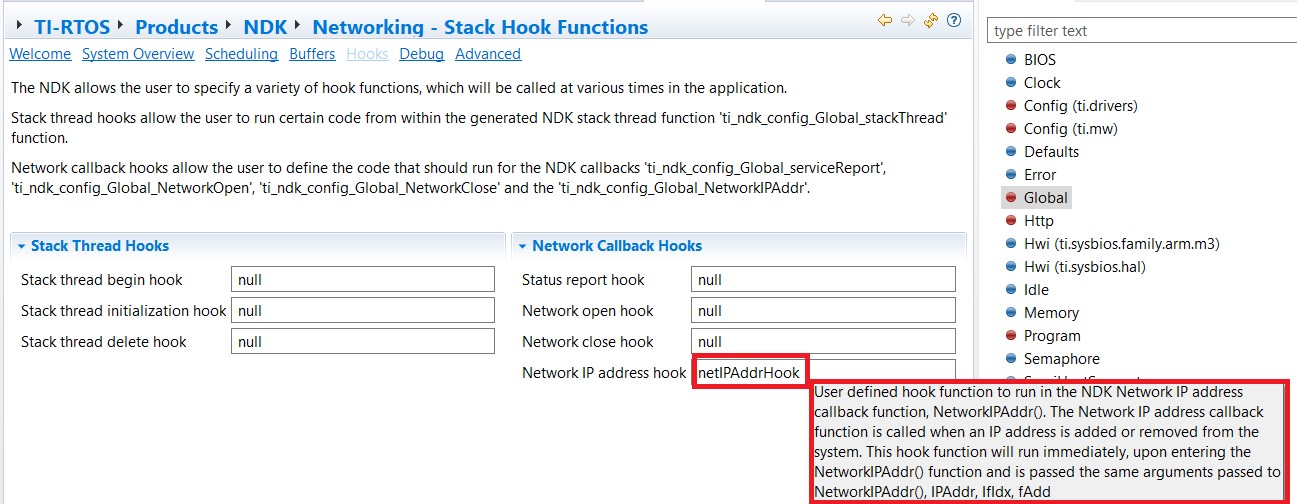SPMA080 April 2021 TM4C1292NCPDT , TM4C1292NCPDT , TM4C1292NCZAD , TM4C1292NCZAD , TM4C1294KCPDT , TM4C1294KCPDT , TM4C1294NCPDT , TM4C1294NCPDT , TM4C1294NCZAD , TM4C1294NCZAD , TM4C1299KCZAD , TM4C1299KCZAD , TM4C1299NCZAD , TM4C1299NCZAD , TM4C129DNCPDT , TM4C129DNCPDT , TM4C129DNCZAD , TM4C129DNCZAD , TM4C129EKCPDT , TM4C129EKCPDT , TM4C129ENCPDT , TM4C129ENCPDT , TM4C129ENCZAD , TM4C129ENCZAD , TM4C129LNCZAD , TM4C129LNCZAD , TM4C129XKCZAD , TM4C129XKCZAD , TM4C129XNCZAD , TM4C129XNCZAD
- Trademarks
- 1 Introduction
- 2 Application Examples
- 3 Application Setup
- 4 Download and Import the Ethernet Examples
- 5 How to Create an Ethernet Application for TI-RTOS NDK
- 6 Enet_tcpecho_server_tirtos Example Overview
- 7 Enet_udpecho_server_tirtos Example Overview
- 8 Enet_httpServer_tirtos Example Overview
- 9 Enet_dns_tirtos Example Overview
- 10Enet_sntp_tirtos Example Overview
- 11Enet_tcpecho_client_tirtos Example Overview
- 12Enet_udpecho_client_tirtos Example Overview
- 13Enet_httpget_tirtos Example Overview
- 14References
13.1 How to Configure NDK for HTTP GET Example
The HTTP application relies on TCP as the underlying transport protocol. The only NDK module that is needed for this example is the TCP module. To enable the TCP module if you are starting from an empty .cfg project.
It is also worth noting that a client must first obtain its IP address before making a connection and an HTTP request to the server. If the client attempts to connect to the server without an IP address, then the Address Resolution Protocol (ARP) will fail. ARP is a communication protocol used for discovering the link layer address, such as a MAC address, associated with a given IP address. The NDK configuration in this example ensures that the callback hook function is only called after the IP address is obtained. netIPAddrHook() is associated as the user defined hook function for the NDK Network IP address callback function NetworkIPAddr() that is called when an IP address is added from the system, see Figure 13-1. When the netIPAddrHook() function is called, it starts the HTTP request task.
 Figure 13-1 Network IP Address Hook
Function
Figure 13-1 Network IP Address Hook
Function